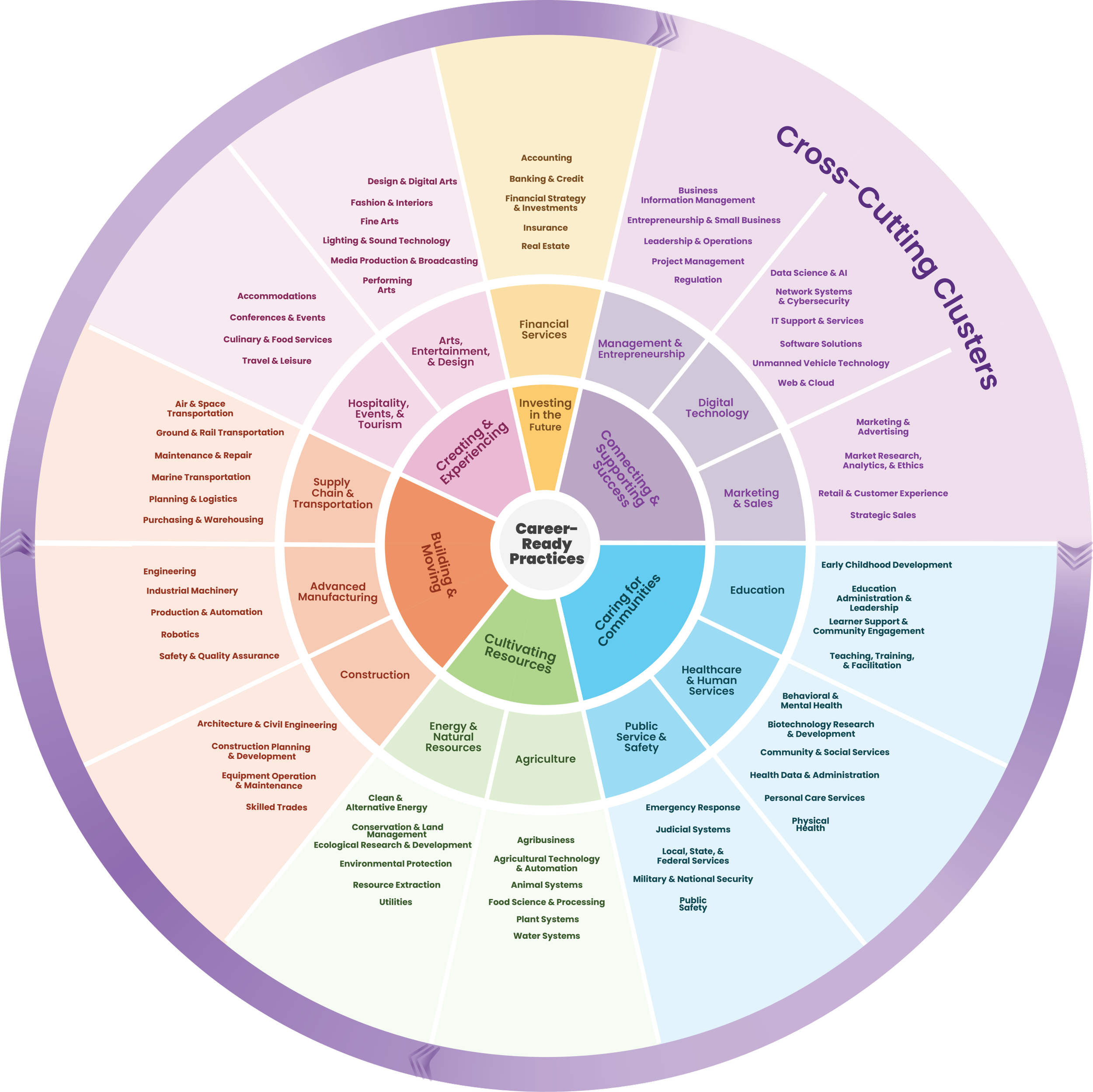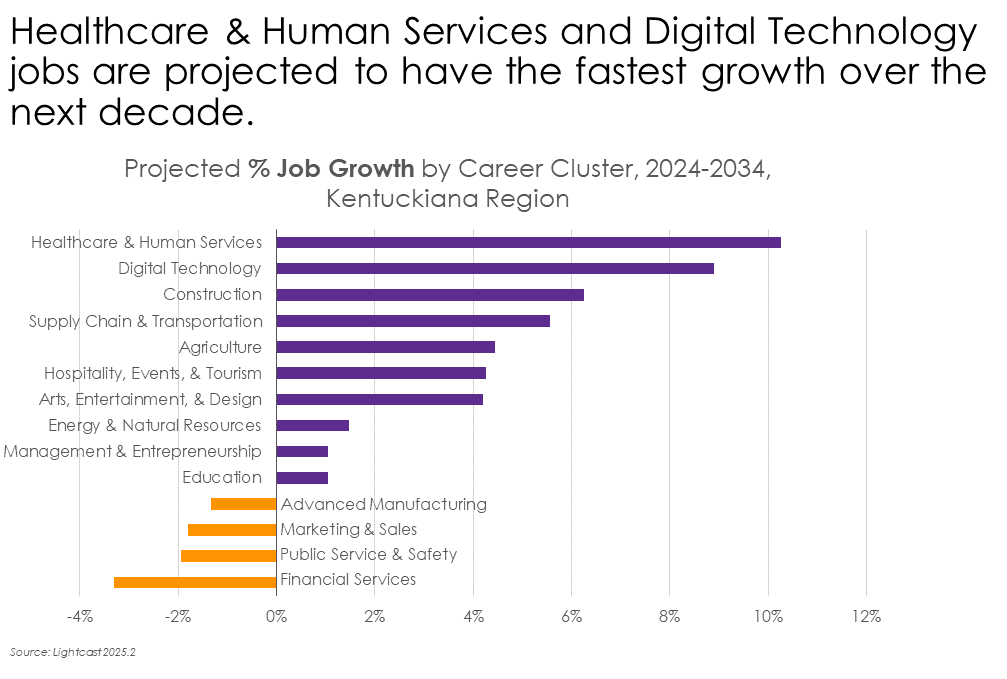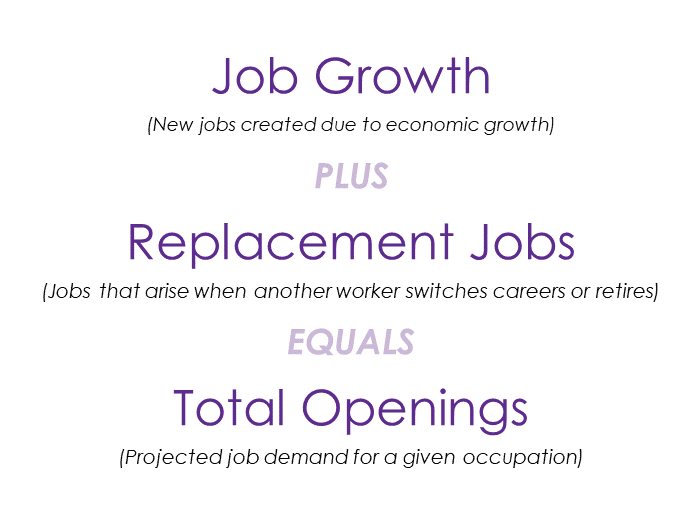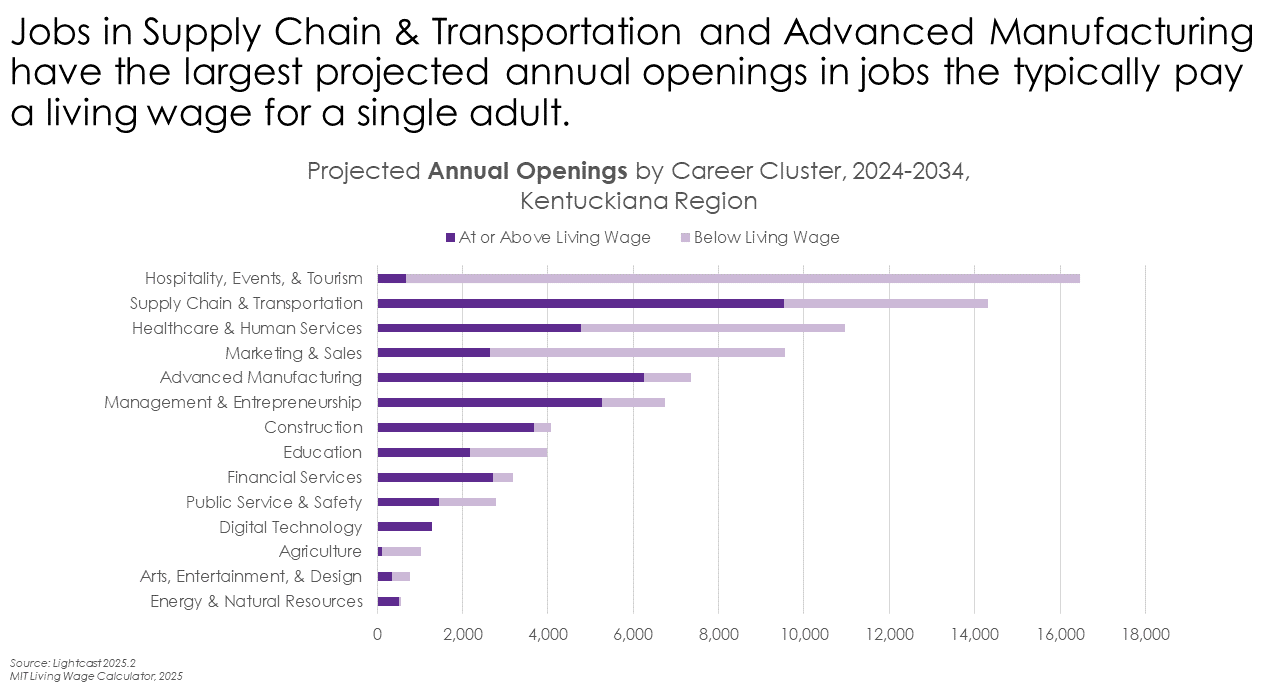Expected job demand in the next decade
The Kentuckiana region's job market is evolving rapidly, shaped by technological advances, demographic shifts, and changing economic priorities. For job seekers, students, and workforce development programs, understanding where opportunities are growing is crucial for making informed career decisions.
This annual Occupational Outlook analyzes Lightcast’s employment projections for the Kentuckiana region, examining which roles are expected to be in-demand over the next decade. By using statistical models that incorporate historical trends and current economic data, these projections help paint a picture of the region's economic future, even as rapid technological change continues to reshape how we work.
Career Clusters
The Occupational Outlook is organized into 14 Career Clusters, using the updated National Career Clusters® Framework. Grouping jobs that require similar skills into Clusters helps simplify the data, and focus strategies around program and training design that support career pathways. The modernized framework promotes the interdisciplinary nature of work, and better aligns with modern employment practices. For example, instead of mechanical and industrial engineers being classified in a separate STEM field, they are now under Advanced Manufacturing.
Occupations, not industry
The Occupational Outlook estimates future employment trends by job type, not industry. Jobs are classified by the tasks of an individual role, regardless of what industry the role is performed in. For example, the healthcare industry employs many workers in Healthcare & Human Services jobs, like nurses, doctors, and radiologists. But the healthcare sector also employs many workers in Hospitality, Events, & Tourism jobs, such as food service and custodial workers. The purpose of this report is not to reflect on industries, but on job types, which are often employed across sectors of the economy.
The current picture
The Kentuckiana region employed more than 700,000 workers across 795 different occupations in 2024. About 1-in-6 of the region’s jobs were in Supply Chain & Transportation roles and 1-in-7 were in Healthcare & Human Services. Together these two Clusters accounted for more than 212,000 jobs in 2024.
Many types of jobs do not generally pay a living wage. In 2024, 38% of the region’s jobs were in occupations where the median hourly wage was less than $21.70 (the current living wage for a single adult with no dependents in the Kentuckiana region). Career Clusters with the highest number of jobs that typically pay a living wage include: Supply Chain & Transportation, Advanced Manufacturing, Healthcare & Human Services, and Management & Entrepreneurship.
Higher wages for entry-level roles in logistics and manufacturing since the pandemic have improved job quality in those positions, but since the wages are still often below a family-supporting wage, it’s important to build pathways within these Clusters. Notably, many jobs in Healthcare & Human Services do not typically provide a living wage, including roles in personal care, physical health, and health data and administration.
Job growth in the next decade
Overall the region’s employment level is projected to grow 3% over the next decade, a gain of more than 22,000 jobs. Healthcare & Human Services and Supply Chain & Transportation will account for the largest share of these new positions. Meanwhile, the total number of jobs in Marketing & Sales, Financial Services, Advanced Manufacturing, and Public Service & Safety roles are projected to decline.
The fastest job growth is projected to be in roles in Healthcare & Human Services and Digital Technology. Healthcare growth stems from an aging population that requires more care-related services. This work is labor intensive and not well suited for automation. Digital Technology growth reflects the economy's increasing reliance on advanced technologies for business operations. Although artificial intelligence is reshaping these occupations, employers continue to seek workers skilled in data management and digital systems.
Beyond these leaders, Construction, Supply Chain & Transportation, Agriculture, Hospitality, Events & Tourism, and Arts, Entertainment, & Design are also expected to outpace average regional growth. Many of the jobs in these Clusters are roles that require physical labor and manual service, making them less vulnerable to technological substitution.
Job demand in the next decade
Projections of the total number of different types of jobs in the region are one critical component of understanding future job demand. However, it does not account for jobs that arise when another worker retires or switches careers. In many cases, that position is refilled, creating demand from the need for a replacement job. Projected openings account for job demand coming from both job growth and backfill needs.
Projected annual openings are the expected number of jobs available to job seekers in a given occupation each year over the next 10 years. Low-wage occupations with high turnover often have a high number of annual openings, because workers don’t tend to stay in those roles very long. However, employers are often looking to backfill those roles when workers churn out. The volume of projected annual openings in Hospitality, Events, & Tourism roles is partially driven by job growth, but replacement needs account for 98% of the openings each year.
The largest projected annual openings in roles that typically pay a living wage for a single adult are in: Supply Chain & Transportation, Advanced Manufacturing, Management & Entrepreneurship, and Healthcare & Human Services.
This overview provides the foundation for an understanding of regional job trends. For a more detailed look at projected job growth and annual openings over the next decade, explore the Occupational Outlook for the Kentuckiana Region, 2024-2034. Select a Career Cluster in the dashboard below, then explore the data on the occupations within that Cluster.
(Please note: The dashboard is best viewed on a desktop computer.)
To find out even more about specific roles, check out Explore Careers. You’ll find the latest labor market data, videos featuring local professionals, and available training programs. Not sure where to begin? Check out the interest inventory to see where your interests align with the job market.






